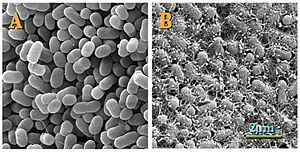The prevention of infection requires control measures at all stages of the food chain, from agricultural production on the farm to processing, manufacturing and preparation of foods in both commercial establishments and the domestic environment. Available data are not sufficient to enable the recommendation of specific intervention methods on the farm in order to reduce the incidence of EHEC in cattle. However, risk assessments conducted at national level have predicted that the number of cases of disease might be reduced by various mitigation strategies for ground beef (for example, screening the animals preslaughter to reduce the introduction of large numbers of pathogens in the slaughtering environment). Good hygienic slaughtering practices reduce contamination of carcasses by faeces, but do not guarantee the absence of EHEC from products. Education in hygienic handling of foods for abattoir workers and those involved in the production of raw meat is essential to keep microbiological contamination to a minimum.
ehec : Encounter and history
Preventive measures for E. coli O157:H7 infection are similar to those recommended for other foodborne diseases (see basic food hygiene practice described below). However, some of the measures may need to be reinforced for EHEC, particularly in view of its importance in vulnerable groups such as children and the elderly. Since a number of EHEC infections have been caused by contact with recreational water, it is also important to protect such water areas, as well as drinking-water sources, from animal wastes.
 Ecoly
Ecoly
No comments:
Post a Comment